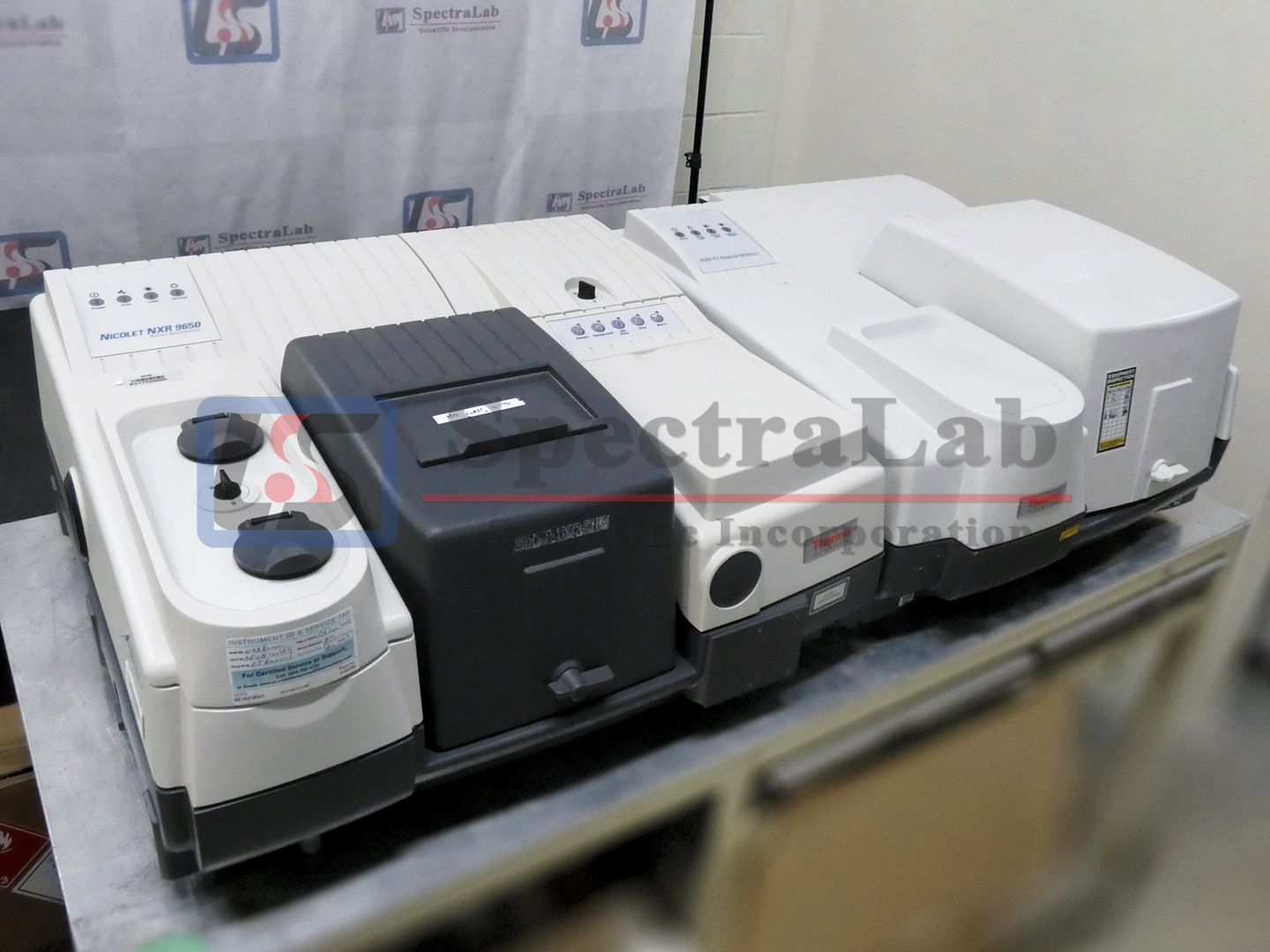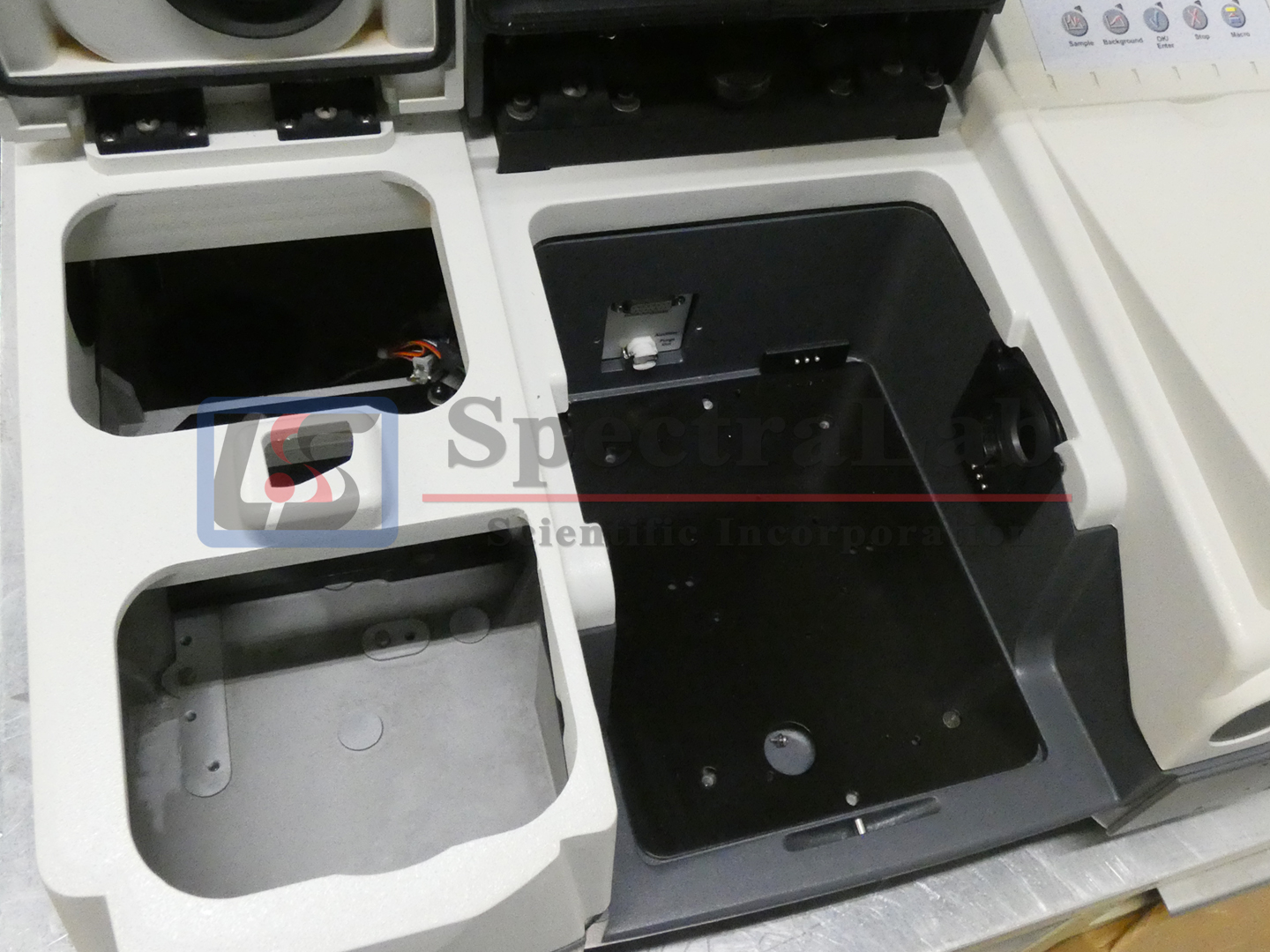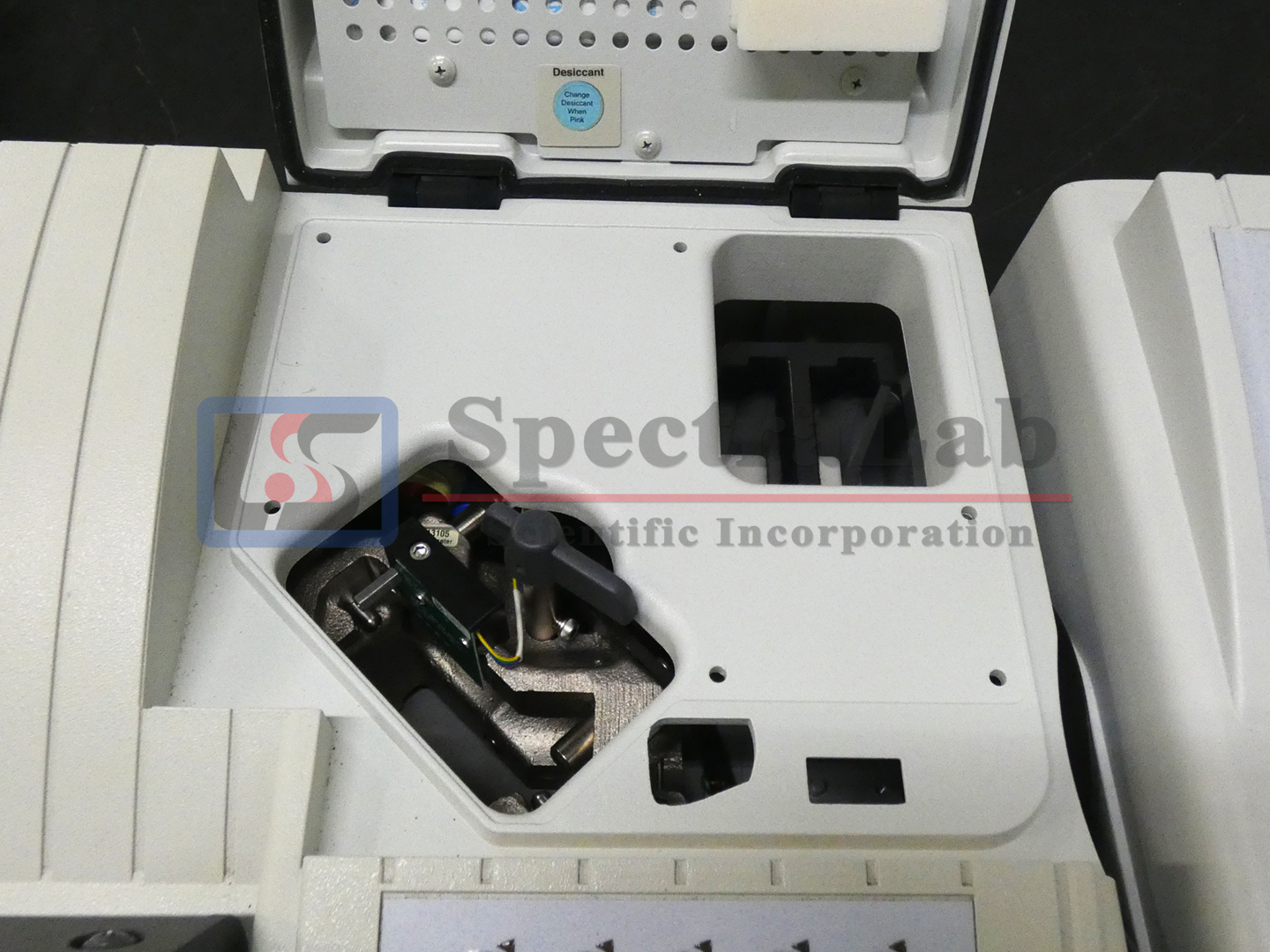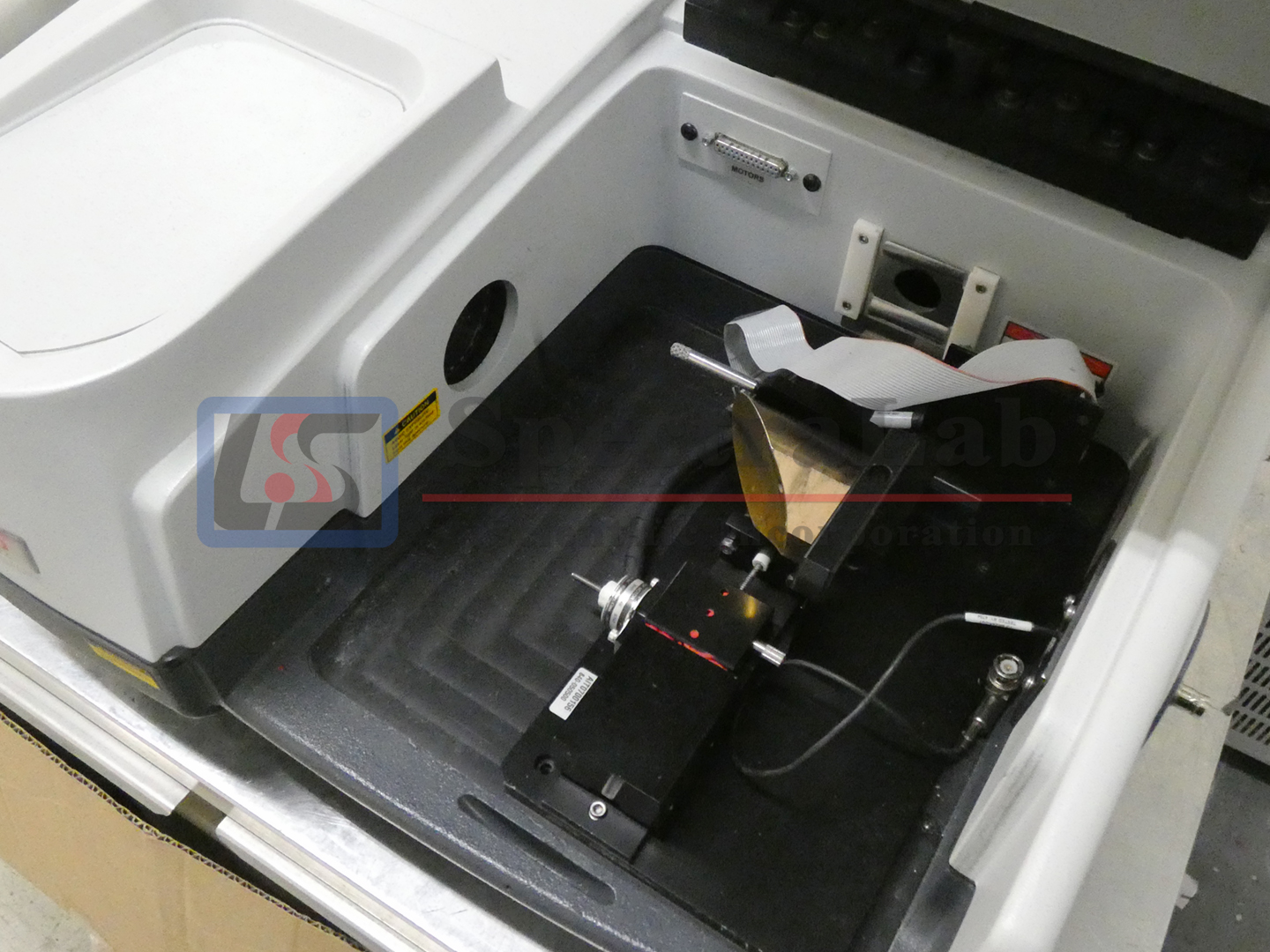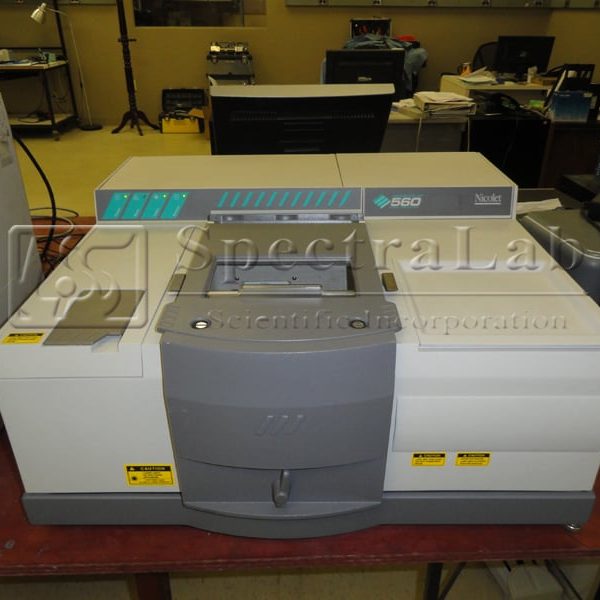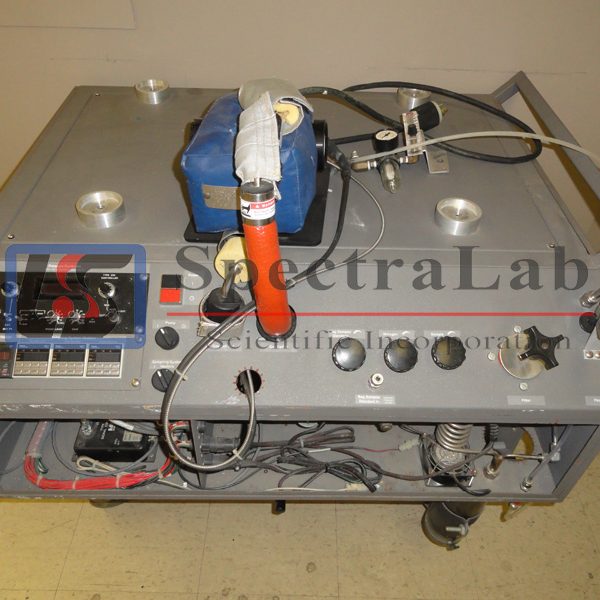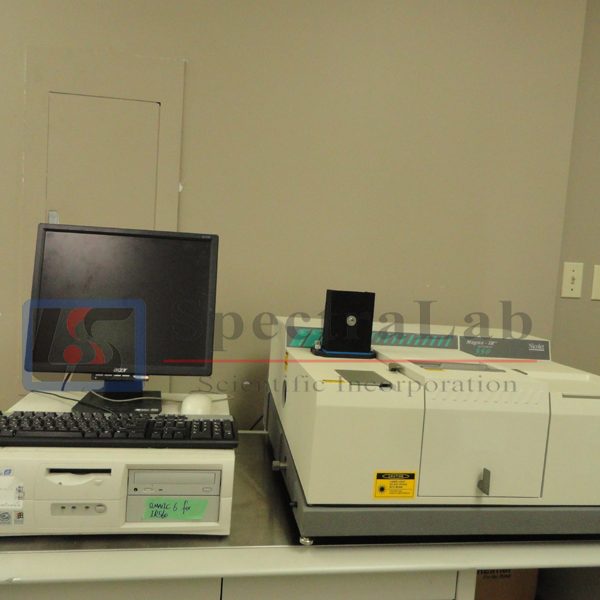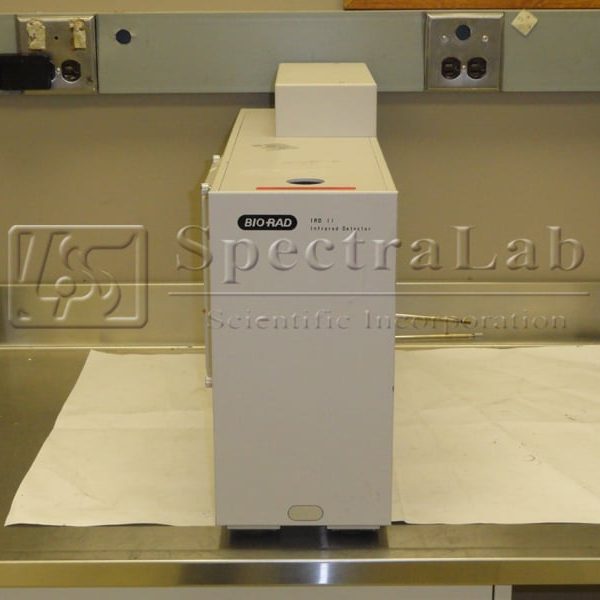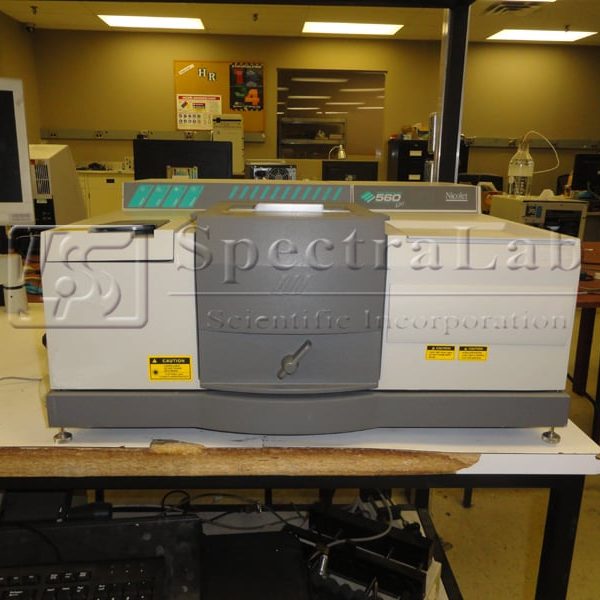Nicolet NXR 9650 FT-Raman Spectrometer
High performance from a dedicated FT-Raman spectrometer
The Thermo Scientific Nicolet NXR 9650 spectrometer is designed for researchers who require the highest performance available from an FT-Raman spectrometer. The heart of the Nicolet NXR 9650 spectrometer is its liquid nitrogen-cooled NXR Genie germanium detector. This detector delivers twice the sensitivity coupled with a tenfold increase in speed in comparison with previous generation detectors. The increase in detector speed permits high-speed scanning without sacrificing data quality. This now makes sample mapping, screening applications and kinetic analysis readily accessible with FT-Raman spectroscopy. Alternatively, the NXR 9650 can be configured a room-temperature with InGaAs detector. The Nicolet NXR 9650 comes with the research-grade, high power output Nd:YVO4 laser operating at 1064 nm.
More Detector Options
The InGaAs detector permits immediate data collection with no wait for detector cool-down. Dual detectors give you the best of both worlds – with fast uptimes using an InGaAs detector and the highest sensitivity using the NXR Genie detector. OMNIC software, which controls the instrument, data collection and analyses, quickly and automatically controls switching from one detector to the other. The Nicolet NXR 9650 FT-Raman spectrometer gains performance, stability, and serviceability from its precision-cast baseplate and its pinned and pre-aligned components.
Extensive Range of Sampling Configurations
The sample compartment for the Nicolet NXR 9650 FT-Raman spectrometer accommodates the new Thermo Scientific MicroStage FT-Raman microscope, which is configured to accept 96-well and 384-well plates for fully automated, high throughput sample analysis. The MicroStage microscope is simple to operate with excellent spatial resolution, while offering full sample mapping capabilities. Additionally, the Nicolet NXR 9650 FT-Raman spectrometer sample compartment accepts an extensive range of pre-aligned, pinned-in-place sampling accessories designed to accommodate typical sample formats, such as powders and liquids in vials, NMR tubes and bottles.
SYSTEM FEATURES
| Excitation Laser | Research grade, 1064 nm 2.5 W Nd:YVO4 laser; high stability and low noise at all power settings with power controlled directly from the software. |
| NXR Genie Germanium Detector | Proprietary, high-performance liquid nitrogen-cooled germanium detector option. |
| InGaAs Detector | Detector option providing good sensitivity for routine use. |
| Dual Detector Option | Automated parameter and detector switching. NXR Genie detector for maximum performance, combined with an InGaAs detector for immediately available detection. |
| Vectra™ Interferometer | Air-bearing design without need for external air supply; 0.09 cm-1 resolution; dynamic alignment provides active compensation for all known modes of interferometer misalignment, including ambient temperature changes. |
| White Light Correction | Standard, optimized reference source, computer controlled; aligned to ensure correction beam follows same path as laser and Raman signal. |
| Sample Compartment | Large (29 cm wide x 32 cm deep x 25.5 cm high) sample compartment with pinned-in-place sampling geometries; easily changeable optics; standard slide holder for optional filters. |
| Filters | Rayleigh rejection filters providing Stokes only or Stokes plus anti-Stokes shift information. Laser line filter to eliminate laser-induced spectral artifacts. |
| Aperture | Continuously variable, computerized iris aperture; automatically sized with selection of spectral resolution. |
| Polarizer | Optional computer-controlled polarizer for dichroic measurements of the collected Raman signal. |
| Beam Conditioning Kit | Two laser attenuator filters enhance the precision of control of laser power at the sample. |
| Beamsplitter | Two laser attenuator filters control the laser power at sample, expanding the range of precision. |
| System Baseplate | Precision cast baseplate with pre-aligned pinned locations for optical elements. |
| Optics | Focusing mirrors diamond-turned and pinned-in-place; gold-coated mirrors throughout to maximize optical throughput in the near-IR; optimized optical path length and minimized number of optical elements to enhance performance. |
| Upgrade Options | Detectors, filters, polarization options, and FT-IR capabilities can be upgraded after initial purchase. |
SYSTEM PERFORMANCE
| NXR Genie Detector Speed | Responsivity constant within 20% over interferometer scanning speeds from 0 – 2.5 cm/sec (0 – 80 kHz). |
| NXR Genie Detector Minimum Spectrum Collection Time | 200 msec (5 scans per second), 2.5 cm/sec stroke speed,
8 cm-1 resolution, 0.1 W laser power, 800 cm-1 cyclohexane band, signal-to-noise ratio of 100. |
| Signal-to-noise Ratios | Typical signal-to-noise ratios are: 1800 NXR Genie detector; 1000 room temperature InGaAs detector. (2.5 min collection time 4 cm-1 resolution.) |
| NXR Genie Detector Hold Time | Typically 48 hours. |
| Spectral Range | High wavenumber cutoff for both detectors: Stokes shift, 3500 cm-1; anti Stokes shift, 3100 cm-1. Standard low wavenumber cutoff is 100 cm-1. Optional 50 cm-1 low wavenumber cutoff filters are also available. |
| Spectral Resolution | Standard Raman resolution is better than 0.8 cm-1.
Maximum interferometer spectral resolution is 0.09 cm-1. |
| Laser Minimum Output | Power is variable in 0.1 W decrements down to 0 W. Laser power is further refined with the beam conditioning kit, which provides laser power settings as low as 3 mW. |
SYSTEM SOFTWARE
| Software Design | Windows®-compatible OMNIC software with pull-down menu options for all display, collection and processing features. |
| Parameter Selection | Interactive, real-time display of interferograms or processed spectra during parameter and beam path selection; computer-controlled laser power and sample focus adjustment. |
| Data Collection | Real-time and interactive display of fully processed spectra during data collection. Data displayed as Raman and shifted Raman spectra, and as an interferogram. |
| Spectral Header | Permanently records collection and processing parameters for each spectrum including detector identification, laser power, spectral resolution, apodization, scan velocity, baseline correction points, subtraction factors and more. |
| Software-selectable Detectors | Detectors selectable from software. |
PHYSICAL CHARACTERISTICS
| Optical Bench Dimensions | With NXR Genie detector: 132 cm (W), 61 cm (D), 88 cm (H);
With InGaAs detector: 132 cm (W), 61 cm (D), 33 cm (H) |
| Shipping Weight | 124 kg; 273 lbs |
| Power Requirements | 120VAC, 2A, 60Hz, or 240VAC, 1A, 50Hz. |
| Regulatory Approvals | Class II laser product |
Nicolet NXR FT-Raman Spectrometer
Raman spectroscopy is a powerful analytical technique which is finding increasing use in environments where its ease of use and non-destructive sampling methods make it a valuable addition to more traditional technology. Extensive spectral libraries, combined with sophisticated searching software, make sample identification easy. Raman is unique in its ability to identify physical differences, such as in crystalline structure.
Raman is Well Suited to:
- Molecular characterization of organics and inorganics
- Conformational analyses such as crystallinity, phase transitions and polymorphs
- Analysis of solids, liquids, and in some cases gases
- Micro- and macro-sampling
- Qualitative and quantitative analysis
Raman Complements FT-IR:
- Both provide spectra rich in information relating to vibrational energy states of covalently bonded materials
- Bonds that generate weak bands with one method typically provide strong signals with the other
- FT-IR usually provides more information relating to functional end groups
- Raman frequently provides more information relating to molecular backbone structures
Advantages Offered by Raman:
- Non-destructive method
- Non-contact
- Typically no sample preparation – no need to dissolve solid samples, nor destroy physical and chemical properties prior to analysis
- Easy sampling through glass and plastic packaging
- Easy access to far-infrared vibrations
- Unlike other techniques, Raman is minimally affected by most molecular interactions. This typically results in spectra with sharp, distinct peaks suitable for spectral interpretation and successive subtraction.

